13 questions to diagnose and resolve declining organic traffic

There’s nothing like spotting a nose-dive in organic traffic to make an SEO’s heart skip a beat.
The thought of digging in and finding the issues can feel downright overwhelming. The contributing factors behind SEO performance are numerous, interconnected and often complex.
Where do you even start?
After over 15 years of playing an SEO private investigator – in-house and as a consultant – I’m sharing 13 questions that have helped me close even the most curious cases.
Together, they make up the framework for a methodical analysis that covers all your bases and uncovers all the issues.
1. Are there signs this might be a tracking issue?
Before we set out in search of any issues, let’s make sure that this isn’t just a tracking bug.
We’re looking for a couple of common signs:
- Big data discrepancies: Google Search Console is reporting vastly different metrics than your internal analytics platform. (Small disparities are normal, so don’t sweat those. They are, after all, different metrics measured by different tools, using different methodologies!)
- Other channels: If site traffic is down across the board, there’s a good chance something is up with your Analytics tracking code or Tag Manager implementation.
Dig deeper: Top 5 SEO data pitfalls to avoid for accurate analysis and reporting
2. Is this a brand problem?
The more your organic traffic is made up of clicks from branded searches, the more reason to check in. If fewer people are searching for your brand by name, that’s a problem but not inherently an SEO problem.
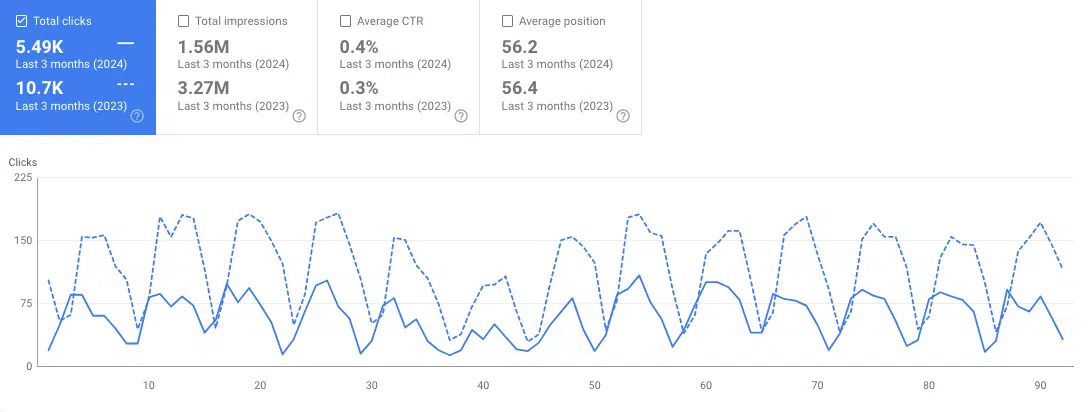

Google Search Console can tell you fairly quickly. Filter down to the keywords that include your brand name in the string and compare recent performance to historical performance.
Here’s an easy example of what that might look like for my company, using GSC’s Query filter functionality and RegEx:
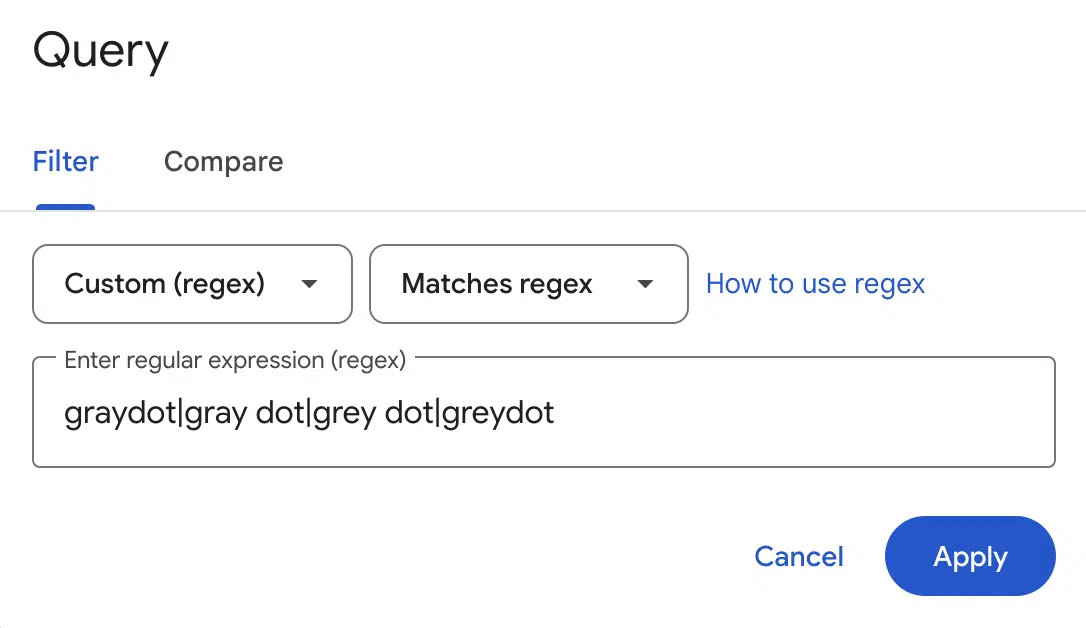

Are you seeing relatively flat non-brand traffic changes, but a big brand swing? The less people see a brand, the less they search for it.
That means it’s time to look at what’s different at the brand and/or channel level, including things like negative press, sunset ad campaigns, or significant rollbacks in acquisition spend.
3. Where is non-brand performance down?
If non-brand performance is the primary factor, look for the leaks – aka the URLs and keywords that are trending down.
Filtering your GSC data will help spotlight any patterns, which can go a long way in pinpointing the actual issue(s).
Mind all four primary metrics – clicks, impressions, CTR and average position – for each of the views below. (Combine this data with first-party analytics tools like GA4 and Matomo, as needed, to dig deeper.)
- Seasonality: Does year-on-year data show the same level and rate of decline at the same time each year?
- URL: Which page(s) are losing traffic? Do they share connections like a URL directory or JavaScript template?
- Query: Which search terms are contributing to the decline? Are they related in terms of topic or focus?
- SERP feature: Did losing featured appearances push your organic results below the fold (and clicks along with them)? Note that you might need to lean on a third-party tool for this, like Semrush, as GSC won’t report on all placement types.
- Shopping and media: Are Google Shopping, Image search, or Video search causing declines you won’t see in your organic rankings? (Using the Search Type filter)
- Geography: Do regional changes in your rankings show that user interest is dwindling or that the SERP is now showing localized search results?
- Mobile: Did you lose more visibility on smartphones and tablets vs. desktops?
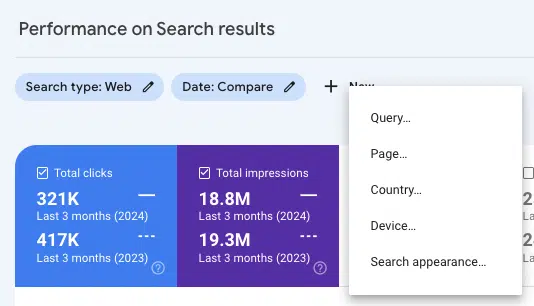

4. Do we care about this traffic?
Sometimes, losing traffic doesn’t actually matter all that much.
It might feel a little taboo to say, but it’s true. The real value of traffic is whether users convert – whatever that might mean for your business.
Generally, the sources of the greatest conversion loss should always get attention first. If the site is losing organic clicks from keywords or URLs that don’t contribute to conversions in any meaningful way, it could be OK not to take any action.
Not every page leads directly to a conversion – especially pages higher up the funnel, like blog posts, where users are just looking for information.
If your analytics reporting defaults to a last-touch attribution model, you won’t see the true conversion value of traffic landing on higher-funnel pages. So it’s crucial to check both first- and last-touch.
The former tells you which URLs lead people to future conversions, while the latter tells you which pages drive purchases when users are ready. Both are important!
5. What does the trend line tell us?
If you’ve made it this far, it’s probably because you’ve determined that you have an SEO issue and it’s causing you to lose traffic that’s important to the business.
The search begins! First stop is the trendline.
If your trendline shows a large drop in a short amount of time (steep and to the left), something’s probably broken. You might see this after major development work, like a migration, or shortly after a Google algorithm update.
A more curved and gradual trendline points to issues happening over time, like thin content stacking up, the market landscape evolving, or losing referrals faster than you’re winning them.


6. Did something change with our site content?
Content changes, outside of major changes to big portions of the website, are usually associated with a gradual trendline. (Exceptions include recent helpful content updates.)
There are a couple of reasons why content issues are almost inevitable at some point unless you’re constantly pruning, updating and evolving content.
- Search engines create better experiences by improving their ability to serve users helpful content – and their and users, criteria for helpful content change over time.
- As sites create new content that meets modern standards, old content that doesn’t meet those standards adds up.
A content audit is a natural next step if traffic is falling because rankings are slipping sitewide, or across many pages.
Dig deeper: 16 reasons why your page isn’t ranking on Google
Get the daily newsletter search marketers rely on.
7. Are there new or major technical issues on the site?
A trendline that looks like it followed an Olympic diver off the board is a good sign to look for major technical hiccups. A gradual trendline could be the result of smaller technical issues stacking up over time.
Either way, a technical audit is the best way to find any needles in the haystack.
Look back at what you learned when you were slicing and dicing performance in GSC. Were there patterns that emerged? They could point in the direction of where to look for technical issues.
For example, if most of the losses come from a specific site directory, there might be something broken on the page template used to create those URLs.
If there’s a really steep drop in traffic, it’s most often a matter of indexing or crawling (i.e., whether Google can access your content, read it and recommend it on SERPs). Robots.txt, meta robots and canonicalization are top priorities in this case.
8. Did we lose backlinks or referrers?
There’s what you can control on your own site, then there’s what happens outside of it. Either can have a huge impact on your SEO performance.
The first thing we want to check in terms of external SEO factors is backlinks since they play a big role in helping Google gauge the quality of a domain. Luckily, there are lots of SEO tools out there that make this easy (Ahrefs, Majestic, etc.).
Determine whether you’ve lost backlinks on a meaningful scale or any referrals from high authority sites. It can be cause for concern if you see one or both, especially for younger sites which may have less authority in the first place.
A pretty common cause for losing backlinks over time is historical PR work. As publications clean up their old content, the backlinks disappear and there aren’t as many new referrals to fill the void.
And since many publications are owned by the same parent company, these efforts – and the resulting loss of links – can stack up quickly. This is especially true for industry publications.
9. Was there a recent algorithm update?
If you’ve never had a site you work on hit hard by an algorithm update, then it probably seems a little like the SEO boogie monster. The legends are all too real.
When Google makes changes, being on the losing end can lead to traffic swings of epic proportions.
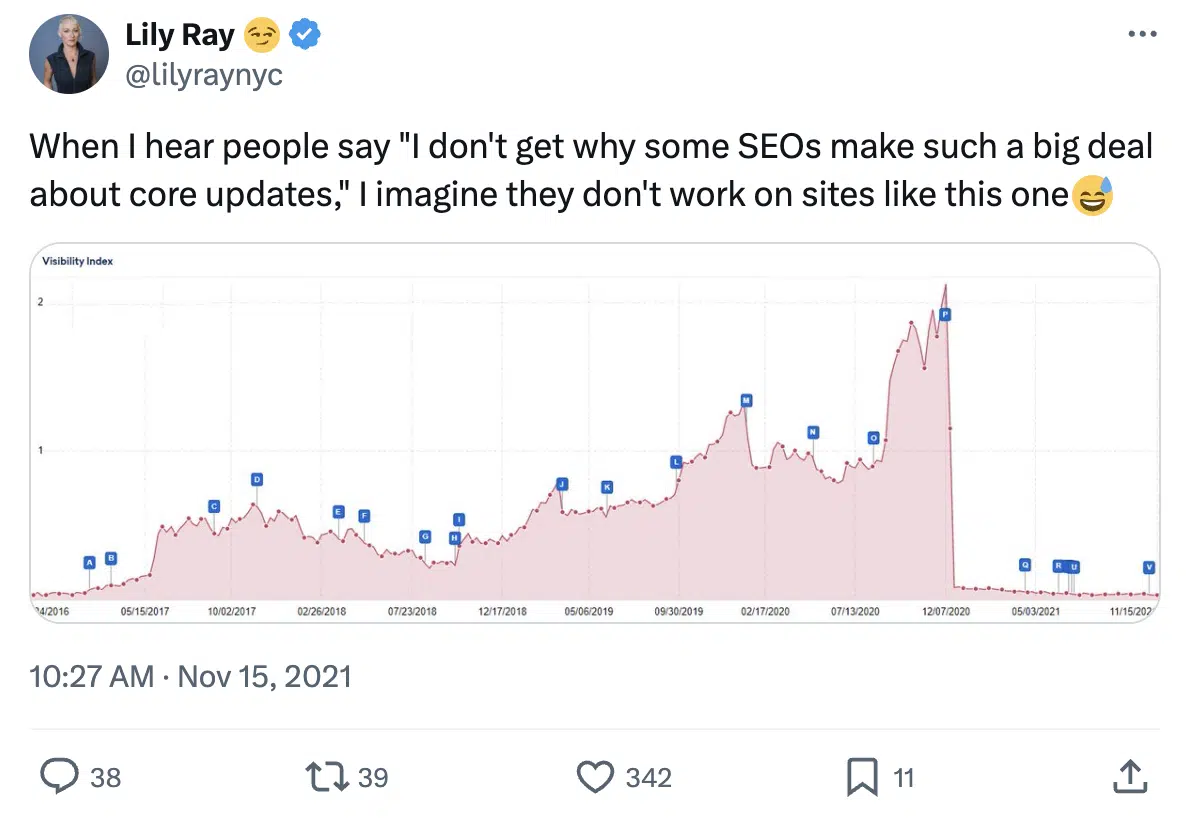

Google announces many of its algorithm updates, but there are those that they don’t. And that adds a layer of complexity because how the heck do you find the “shadow” updates?
The SEO community is up to the task! There’s documentation and even tools where industry experts are keeping tabs on what’s shifting in the index, when those shifts signal an update and where it’s having an impact.
A couple of my favorite resources are:
- Marie Haynes’ Google Algorithm Update List: It includes a running list of confirmed and unconfirmed updates, along with helpful commentary.
- GSC Guardian: A Chrome extension created by Darwin Santos that overlays updates and uptime issues from Google onto your Google Search Console charts.
10. Did the SERP change in meaningful ways?
The knowledge panel is by no means new. But if you were in the SEO world back when it was rolled out in 2012, you might have thought it was the end times.


If users no longer had to click on a result to see the information they were looking for, organic results were set to take a hit – even if rankings stayed the same.
In hindsight, the knowledge panel is just one of many changes Google has made to search engine results pages. Whether it’s making ads more prominent or one of any number of featured snippets, each new iteration tends to push traditional organic results further below the fold.
And now, with some SGE results in the wild, it’s happening again!


Long story short, the structure of the SERP is far from static – and that’s a point to consider in your investigation.
11. Is the domain being penalized?
It’d be remiss to talk about penalization without first making a clear distinction between getting “penalized” and getting pummeled by an algo update.
The impact of an algorithm update can look and feel a lot like penalization. Except, it’s not unique to your site or just a byproduct of Google trying to make Google better.
A penalty, on the other hand, is the result of Google determining that your site is extremely low-quality or harmful in some way.
It’s a real possibility, even if your site doesn’t have malicious intentions or isn’t actively engaging in spammy SEO tactics. To find penalties, look for a notification in your GSC account (Security > Manual actions).
12. Did competition change?
With every iteration of the Olympics, new world records are set across different sports. New competitors emerge, existing competitors improve and champions get knocked off the podium.
That’s the nature of competition.
In the same way, every domain is in a race against other domains to rank on top. If the leaders set it to cruise control, other domains hit the gas and eventually catch up.
Losing rankings and featured placements to competitors may mean that they’re doing something right, or it may simply mean that Google is testing which results make users happier. Looking at on-page and domain-level factors via a competitive analysis can illuminate their potential advantages.
For on-page factors, ask yourself:
- Does the content do a better job of meeting the user’s needs?
- Is the content different from other competitors (including your domain) in terms of quality and perspective?
- Does the structure of the information make it easy to understand?
- Is the author of the content more of an authority on the topic than other authors?
- Does the page provide an elevated user experience?
For domain-level factors, create a scorecard (table) where you can see the following metrics side-by-side by competitor:
- Domain rating or domain authority
- Number of indexed pages
- Backlinks
- Referring domains
13. Are users behaving differently?
As the world changes, society changes – and preferences change in tandem.
For example, if I asked a barista for an oat milk latte 10 years ago, I would have probably gotten a weird look. Today, it’s a staple in many coffee shops.
You can see that phenomenon quantified in Google Trends, which reports that interest levels in oat milk have shot up over the past five years.
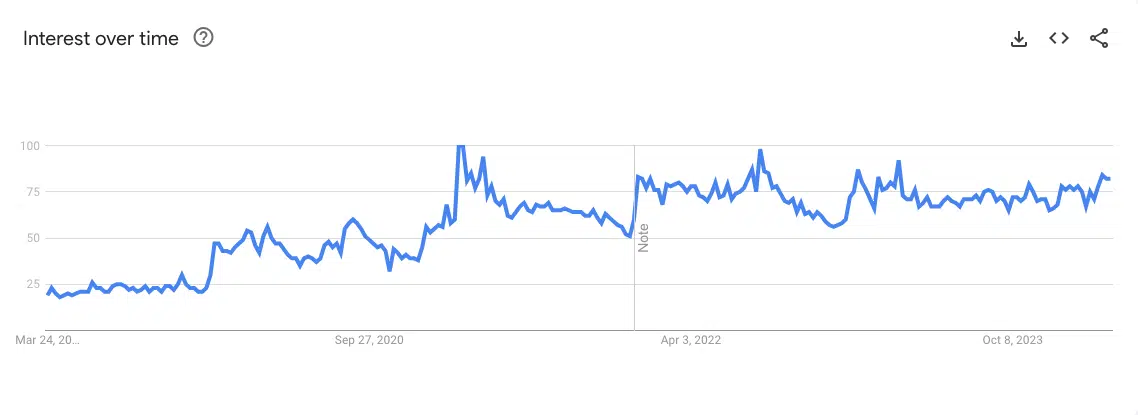

When the interest in a topic, industry, service, etc. grows, so does the total number of clicks available to win. When it shrinks, clicks drop – even when rankings stay consistent – because the lead pool as a whole is smaller.
Quantifying changes in keyword volume over time can serve as a form of market intelligence that gives you a view into whether overall demand is shrinking.
Dig deeper: Why traffic declines despite solid rankings and what to do
Take your findings to the team
Once you’ve adequately answered all of these questions, it becomes a matter of weighing the issues on your list against one another.
Dig in to understand what’s having the most outsized impact and determine what you want to fix. And, just as importantly, document it in a way stakeholders can understand.
The greater your ability to build a strong business case, the more likely it is to garner support, get fixed and turn results around. Happy investigating!
Opinions expressed in this article are those of the guest author and not necessarily Search Engine Land. Staff authors are listed here.





